Does it matter if the light microscope is not set up correctly?
- What if the condenser diaphragm is closed down too much or not enough?
- Does it matter if the condenser is positioned too low or high?
- Should the condenser be oiled to the slide?
- What about the light?
Condenser aperture
back upThe photographs shown below illustrate the effect on resolution of closing down the condenser aperture (via the condenser diaphragm). Everything else in the microscope was set up optimally for Köhler illumination (correct condenser height, specimen oiled to condenser and to objective, etc). The specimen was a Frustulia valve with c. 31 striae in 10 µm (0.32 µm between dark lines). The whole image can be downloaded; the original image was enhanced using the Levels and Brightness/Contrast tools in Adobe Photoshop..
- aperture large
- aperture large, image enhanced
- aperture optimal
- aperture closed a little too much
- aperture small
- aperture very small
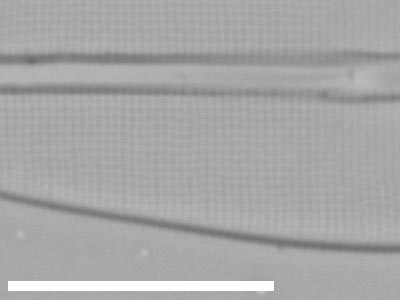
1. Condenser diaphragm opened wider than is traditionally regarded as appropriate for Köhler illumination, so that superfluous light is present, introducing glare and reducing contrast. However, despite the low contrast, both longitudinal (horizontal in figure) and transverse striations are clearly resolved
Part of the original image, with no enhancement. The scale bar is 10 µm.
back up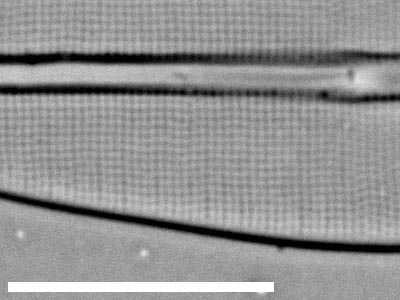
1A. As 1, but with digital enhancement of contrast./p>
The image now shows good contrast, though this has also made the image noise more obvious; the noise was introduced during image acquisition.
Approximately the same degree of enhancement was applied to the following images. In each case, the Levels tool in Photoshop was used to expand the dynamic range of the image to the full range from black to white, followed by further slight enhancement of contrast..
back up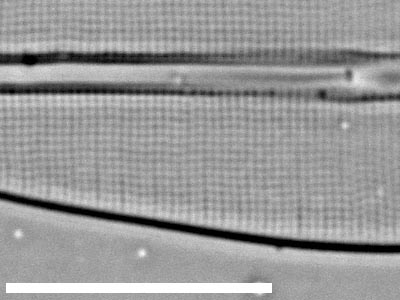
2. Condenser diaphragm optimal, according to the requirements for Köhler illumination.
There is no significant difference in the definition of the striae relative to 1A. This means that opening the diaphragm further than it needs to be (as in 1 and 1A) need not adversely affect the quality of the image, if digital enhancement is possible. Not opening the diaphragm enough, however, is deleterious, as shown below.
back up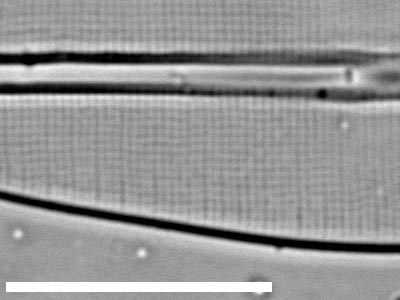
3. Condenser diaphragm closed down a little too much. Although the diaphragm is still quite wide open, relative to where most students would place it, there is already noticeable loss of clarity in the striations.
On the other hand, the outer wall and parallel ridges around the raphe slit appear more obvious, relative to 1A.
back up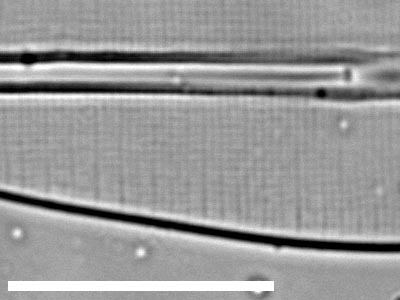
4. Condenser diaphragm closed further, down to the position where, in my experience, most students would put it. The striae have almost disappeared (and they were even less obvious in the image before enhancement). The margin and raphe ribs are still well defined.
back up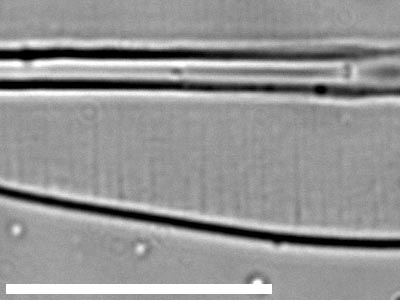
5. Condenser diaphragm closed even further. Hard to believe that anyone would choose to do this, but they do. Longitudinal striae invisible; hints of transverse striation, but the stria density couldn't be measured.
back up
